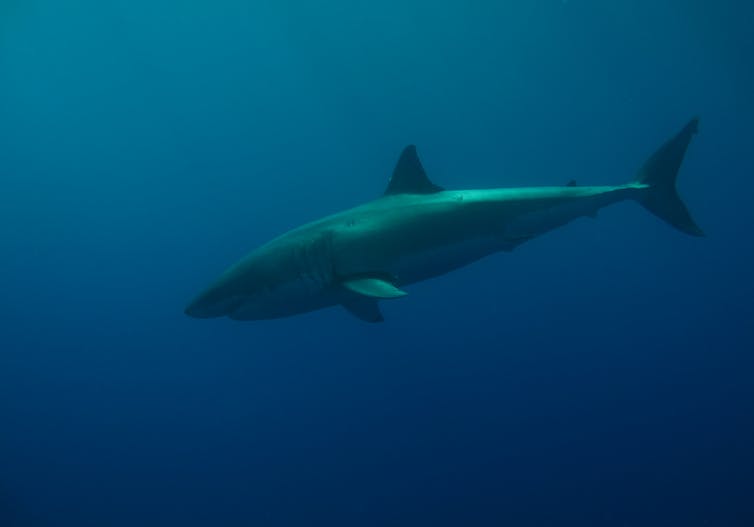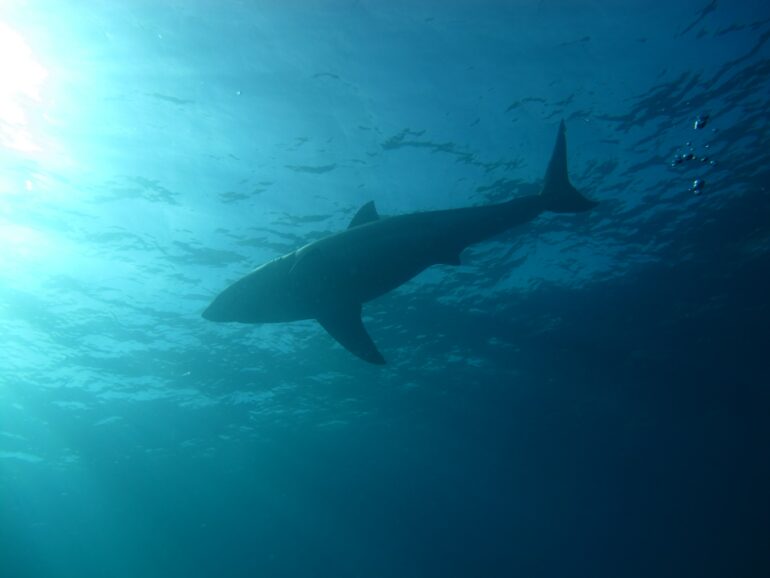Sitting anchored to the rocky reef 70 feet (21 meters) below the surface of the ocean, hundreds of scalloped hammerhead sharks swam above me in unison, moving as if one. When most people think of sharks, they don’t think of them as social creatures. The schooling hammerhead sharks above my head were a striking example of shark social groups, a topic that has not been the subject of much exploration.
I am a marine biologist and study the behavior of predators. For the last 22 years, my research has focused on sharks.
Biologists have long known that some sharks – like hammerheads – are social creatures, but whether great white sharks interact with each other while hunting, and if so, how, is still a mystery. Since 2014, my colleagues and I have visited the beautiful Guadalupe Island off the coast of Mexico to try to find out. Using state of the art technology, we have been able to gain a better understanding of the secret social lives of these top predators.
Some creatures, like ants, form highly complex social systems based around cooperation, but there are many levels of social behavior.
What makes a social animal?
A social animal is one that interacts and spends time with other individuals of the same species. While nearly all animals show some degree of sociality – when they mate, for example – social behaviors can range from solitary snow leopards to highly social ant colonies.
When people think of social predators, most probably picture a pack of wolves hunting in an organized, cooperative group. But social behavior can be much simpler than that. An animal may simply decide to stay in close proximity to another individual because it has learned that if its “colleague” locates some prey, its own chances of getting a meal increase.
The sharing of information – the location of prey – in this example is inadvertent. The first predator wasn’t purposefully alerting the second predator to the presence of a meal. But under the right conditions, this type of basic social interaction can increase the success of both animals’ hunting.

Great white sharks were historically seen as individualistic hunters, but previous research hinted at social behaviors.
Yannis Papastamatiou, CC BY-ND
Hints of a social shark
White sharks travel to seal colonies during the seal’s breeding seasons in the summer and fall. Sharks generally hunt by patrolling the waters adjacent to seal colonies and ambush seals at the surface.
In 2001, researchers in California published a paper describing how white sharks patrolling a seal colony at Año Nuevo Island would remain within “eavesdropping” distance of each other. The biologists suggested that if one shark killed a marine mammal, other, nearby sharks would register this information and quickly approach the site of the kill, perhaps hoping to eat from the remains of the prey….


